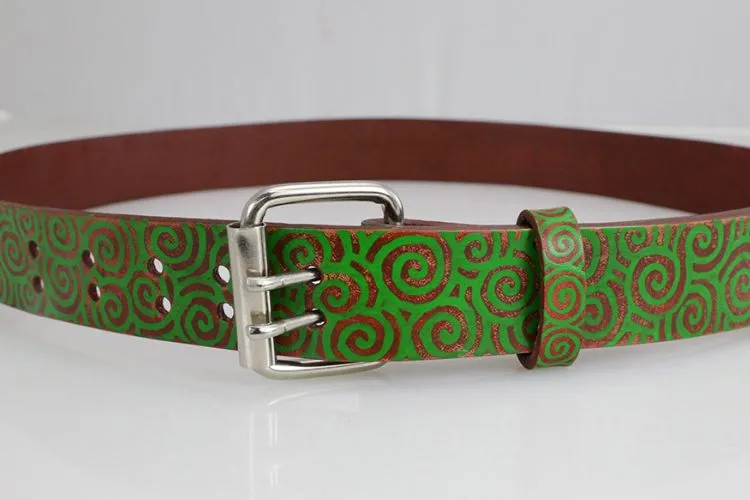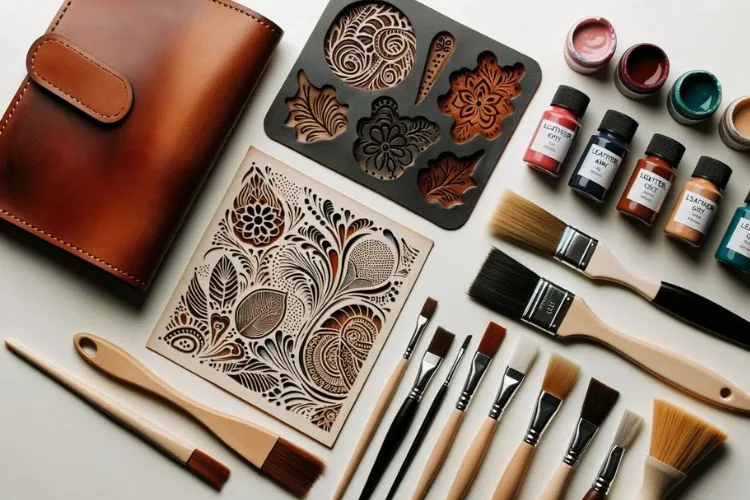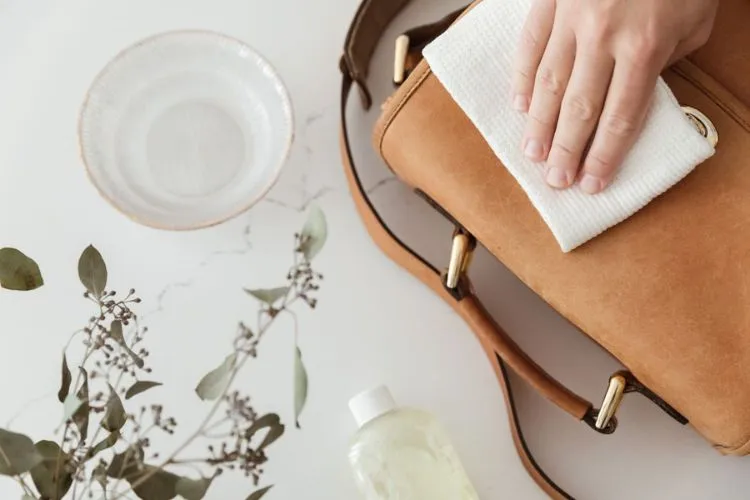Leather is a timeless material, celebrated for its durability, rich texture, and classic aesthetic appeal. Acrylic paint, by contrast, is known for its versatility, vibrant colors, and endless artistic possibilities.
Leather is a timeless material, known for its durability and aesthetic appeal. Acrylic paint, on the other hand, is versatile and vibrant, offering endless artistic possibilities.
Merging these two can seem daunting, yet with the right approach, acrylic paint can indeed work marvelously on leather.
This article delves into all you need to know about using acrylic paint on leather, ensuring your projects turn out both stylish and enduring.

Does Acrylic Paint Work On Leather?
Leather comes in various types, from soft suede to sturdy full-grain. Each kind has its unique properties, making some more suited to painting than others. Acrylic paint is water-based, making it flexible and easy to work with.
Its quick drying time and ability to adhere to numerous surfaces make it a popular choice for leather projects. When acrylic paint dries, it leaves a flexible coat, which is compatible with the natural flexibility of leather.
Prepping Leather for Acrylic Paint
Preparing your leather object is crucial for a successful paint job. Start by cleaning the leather with a damp cloth to remove dust and oils.
For a more thorough clean, use a mild leather cleaner. Once the leather is dry, lightly sand it with fine-grit sandpaper.
This roughens the surface slightly, improving paint adherence. Applying a primer designed for leather can further enhance the paint’s durability. Gather all necessary materials before you start, such as the leather item, paints, brushes, and cleaning tools.
Step-by-Step Guide to Painting Leather with Acrylics
Painting leather with acrylics involves a few detailed steps:

- Apply a thin coat of acrylic paint using a flat brush for an even application. Work in layers, allowing each layer to dry thoroughly before applying the next. This avoids the paint from becoming too thick or cracking.
- Let the paint dry naturally. Acrylic paint dries relatively fast, but the drying time can vary based on the paint thickness and the leather’s absorbency.
- Avoid common mistakes like overloading the brush with paint or rushing the drying process. Patience is key in achieving a smooth and even finish.
Best Practices for Durability and Finish
For a project that lasts, apply a sealant over the dried paint. A sealant protects the paint from peeling, cracking, and weather elements.
Choose a sealant compatible with both acrylic paint and leather, like a water-based varnish, for best results.
Apply it evenly with a brush and let it dry completely. Regularly checking the item for signs of wear can help catch any issues early on.
Inspiration and Ideas for Leather Projects
The potential for creativity is vast. Consider customizing a leather jacket with intricate patterns or adding a pop of color to leather shoes.
Personalizing wallets, belts, or bags are also great projects. Experiment with different designs, from simple geometrical patterns to complex landscapes or portraits, depending on your skill level.
You may also find useful: How to Make Acrylic Paint Dry Faster? | Is Acrylic Paint Mold Resistant?
Maintenance and Care for Painted Leather Goods
Taking care of painted leather ensures its longevity. Clean it gently with a dry or slightly damp cloth. Avoid harsh cleaners or abrasive materials that can damage the paint.
If the item gets wet, let it dry naturally away from direct heat. Over time, you may need to apply a fresh coat of sealant to maintain the protective layer.

Choosing the Right Acrylic Paint for Leather
Choosing the right acrylic paint for your leather project is crucial for both its appearance and longevity. Here’s a quick guide to help you make the best choice:
- Flexibility and Durability: Opt for acrylic paints formulated specifically for leather. These paints are made to flex with the leather, preventing cracks and peels with regular use.
- Brand Recommendations: Angelus Leather Paint is highly recommended for its excellent adherence to leather and its wide range of vibrant colors.
- Finishes: Look for paints offering various finishes (matte, glossy, metallic) to match your creative vision.
- Water-Based Formulas: Choose water-based acrylics for easy clean-up and a more eco-friendly option. They also tend to be less toxic.
- Test Samples: If possible, purchase sample sizes to test colors and finishes on small leather scraps before committing to larger quantities for your project.
By focusing on these key points, you can select the best acrylic paint to bring your leather projects to life with vibrant color that lasts.
Techniques for Detailed Leather Painting
Advanced techniques in leather painting can significantly enhance the intricacy and appeal of your projects. For those aiming to elevate their craft, here are some essential methods:
- Shading and Blending: Employ shading to add depth and blending to smooth transitions between colors, crucial for realistic effects. Soft brushes can facilitate smooth gradient transitions.
- Texturing: To mimic leather’s natural grain, use tools like sponges or stiff brushes that can dab or stipple paint to create texture.
- Layering: Apply thin glazes of paint in layers; this technique allows for complex color buildup and depth without the paint cracking.
- Detailing Brushes: Use fine-tip brushes for intricate details such as lines or small embellishments, ensuring precision in your artwork.
Mastering these techniques requires practice but can dramatically improve the quality and realism of your leather painting projects.
Frequently Asked Questions (FAQs)
Does acrylic paint crack on leather?
Proper application and preparation greatly reduce the risk of cracking. Use thin layers and let each layer dry thoroughly.
How to paint a leather sofa with acrylics?
Start by cleaning and prepping the sofa. Use wide brushes for an even coat and work in sections. Applying a sealant is crucial for a sofa due to its frequent use.
Can you use acrylic paint on leather shoes?
Absolutely. Ensure the shoes are clean and dry before starting. Consider using a stencil for designs and finishing with a sealant for durability.
Tips for painting a leather jacket with acrylics
Opt for flexible acrylic paints. Test the paint on a small, inconspicuous area first. After painting, hang the jacket in a well-ventilated area to dry.
Conclusion:
Painting leather with acrylics opens a world of creative possibilities, allowing for the transformation of everyday items into unique, personalized treasures.
With careful preparation, application, and care, your painted leather projects will not only look fantastic but also stand the test of time.

Meet Isabella Anderson, your acrylic painting mentor with over a decade of brush-wielding mastery. Dive into the colorful world of acrylics with her expert guidance, featured exclusively on ‘Acrylic Authority.’ Unleash your inner artist and explore the limitless possibilities of this versatile medium alongside a true acrylic aficionado.
